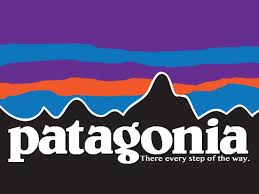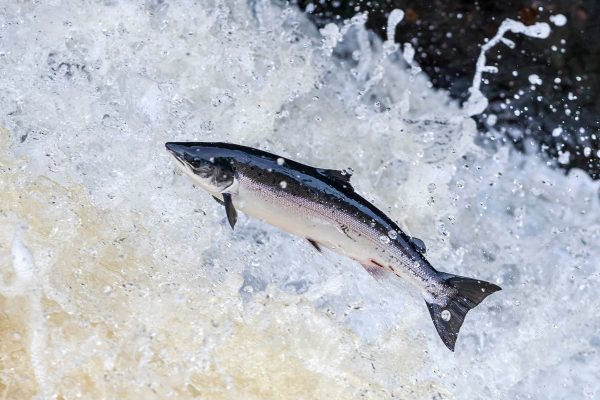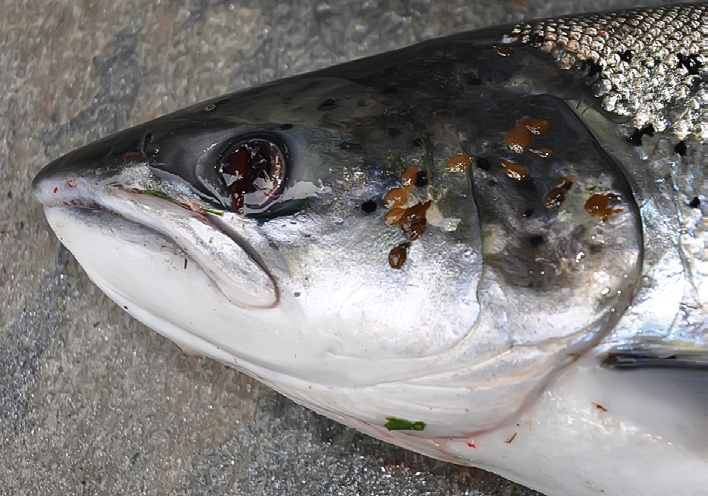-
COP 26 – Salmon School
Salmon and COP26 Wild salmon are a majestic symbol and indicator of the health of our rivers, land, and oceans. They range across nearly half the planet. But climate change and other human impacts are driving them towards extinction. Investing in community-driven approaches to save wild salmon will help us limit global warming to 1.5°C and help communities adapt to near-term climate change. Salmon School embodies the local work on river systems worldwide to restore salmon and the cold, clean water they need—from the River Clyde in Glasgow to the outermost reaches of the Arctic. Here is how safeguarding salmon can help achieve the four goals outlined in the 2021 United Nations Climate Change Summit (COP26). The following initiative at COP 26 SEEKS TO HIGHLIGHT THE PLIGHT OF WILD SALMON IN A CHANGING CLIMATE. Take the time to get involved. There is little doubt that climatic change has and will substantially change wild salmon survival here in Ireland. The Salmon School
Continue reading -
Shot Head – Bantry Bay
Salmon Watch Ireland is extremely disappointed with the decision of the Aquaculture Licensing Appeal Board decision to grant an aquaculture licence to MOWI for a new salmon farm at Shot Head in Bantry Bay. Our initial evaluation of the Board's decision points to a lack of knowledge and indeed understanding of the European Court of Justice standard of the ‘best available scientific knowledge in the field ” regarding the impact of sea lice on wild salmonid populations. The decision is counter to the recent and very welcome intervention of the EU delegation at the recent North Atlantic Salmon Conservation Organisation conference in June 2021 which stated that: Parties/ Jurisdictions should consider adopting a policy of phasing out open net pen salmon aquaculture over a specified period or licence term and restrict any new licences to those utilising alternative technologies in order to make significant progress towards achievement of the International Goals for sea lice and containment. This policy should be prioritised in sensitive areas such as the estuaries of Class I salmon rivers or salmon rivers in Special Areas of Conservation. The reliance of the industry and ALAB on scientific material provided by the Marine Institute which has consistently downplayed the impact of sea lice from salmon farms on wild salmonids is alarming. The Marine Institute as part of the Irish delegation to NASCO and thus part of the EU delegation must now explain why the institute is lending support to the open net salmon farming industry in Ireland while being supportive of EU policy to NASCO regarding the phasing out of open net salmon farming in order to protect wild salmonids from sea lice and escapees. Salmon Watch Ireland will examine in detail the determination by ALAB before deciding our next course of action.
Continue reading -
Fish Farming Licence – Warning to Department
Salmon Watch Ireland has issued a letter to the Assistant Principal Officer of the Department of Agriculture Food and the Marine to convey our intention of objecting to the renewal of salmon aquaculture licences or the granting of new licences. Our focus is on the inadequacies of the Appropriate Assessment process which is essentially not addressing a number of issues regarding the impact of salmon aquaculture on wild salmon. The impacts of the transfer of pathogens to wild salmon has not been properly addressed nor has the impact of escapees on genetic diversity of wild salmon stocks. The reliance of the Department on a narrow band of scientific studies carried out by the Marine Institute in regard to the impact of sea lice on wild salmon is at odds with the European Court of Justice judgement which requires that " the best available scientific knowledge in the field " be used when carrying out Appropriate Assessments. Salmon Watch Ireland will exhaust all legal avenues to achieve our aim of conserving wild Atlantic salmon. Read the full text here: https://drive.google.com/file/d/1y8w-J1xMJeM-4wa6ccrMe5vyB9tT79vw/view?usp=sharing
Continue reading -
Seaspiracy
This film is available on Netflix. It is well worth watching and demonstrates the appalling situation regarding fish farming and the unsustainable way we treat our oceans. Film is fully available on Netflix. Seaspiracy https://www.youtube.com/watch?v=1Q5CXN7soQg
Continue reading -
Salmon Farming – Exposed Scotland’s Appalling Industry
This a must read to understand the effect of salmon farming on biodiversity and the coastal ecosystem. Ireland has a similar profile as Scotland with an even more pressing temperature regime at sea which will exacerbate the disease and parasite problems associated with the industry. The document is extensive and well researched and should be studied by all concerned with wild fish and environmental matters. With its beautiful landscapes and rugged coastline, Scotland is renowned as a wildlife destination. But lurking under coastal waters is a rapidly expanding industry, rife with animal welfare issues and damaging the environment and biodiversity. Known as the King of Fish, with their impressive athletic abilities and epic journey from river to sea and back again, Atlantic salmon are Scotland’s most iconic fish. But these days they are factory farmed in huge numbers where they can migrate no further than the cage walls. Scottish salmon farming has expanded quickly, growing by 41% in the past decade, and the industry has no plans to slow. In 2019 a massive 203,881 tonnes of Atlantic salmon was produced (over 38 million individual fish), but industry growth targets of 300,000-400,000 tonnes annually by 2030, involve a further 47-96% increase in production. Please Read More
Continue reading -
The Status of Irish Salmon Stocks in 2020 with Catch Advice for 2021
Salmon Watch Ireland would like draw your attention to the recently published document from the Technical Expert Group on Salmon. We will answer any questions that you may have or request clarification from TEGOS on aspects that you are concerned with. The links to the reports are listed here: Catch Advice 2021 River Specific Advice The Technical Expert Group on Salmon (TEGOS) advises that in 2021: 48 rivers have an advised harvestable surplus as they are exceeding their conservation limits (CLs). A further 32 rivers, may be opened on a catch and release only basis, subject to IFI management criteria based on having a high probability of achieving 50% of their conservation limit (CL) or exceeding the management qualifying fry threshold of ≥15 fry (0+) per 5 minute electrofishing (multiple site catchment average). In addition 64 rivers are (a) failing to meet 50% of their CL or (b) recent data to determine their CL attainment status are lacking. Where there is a lack of data, or where catchment-wide electro-fishing surveys indicate juvenile abundance below the fry threshold, the TEGOS assumes that these rivers are failing to meet CL. There are 16 rivers for which there are significant fisheries on the MSW (spring salmon) component of the stock and a separate assessment is made. Of these: 11 have an advised harvestable surplus as they are exceeding their CL. 5 rivers may be opened on a catch and release-only basis subject to IFI management criteria as they have a high probability of achieving 50% of their CL or exceed the minimum mean fry threshold (≥15 fry) in catchment-wide electro-fishing. There are currently 40 rivers or river tributaries of the 144 salmon rivers assessed in Special Areas of Conservation (SACs) where salmon have a qualifying interest under the EU Habitats Directive. Of these, only 20 are above their CL.
Continue reading -
Roadmap Policy – Inland Fisheries Ireland
A Roadmap Policy Framework has been launched for Ireland’s Inland Fisheries Wednesday, 27th of January 2021: The Board of Inland Fisheries Ireland (IFI) welcomes Minister Eamon Ryan’s publication of ‘Towards a Policy Framework for Inland Fisheries in Ireland - A Roadmap’. The roadmap forms an important part of the first stage of developing a policy and regulatory framework for the inland fisheries sector. Francis O’Donnell, CEO of Inland Fisheries Ireland said: ‘We encourage all of our stakeholders to get involved in the process of developing this framework for the future of Ireland’s inland fisheries resource. The roadmap is a significant first step in paving the way forward towards a resource that will be conserved and managed in a sustainable way.’ To read more about the roadmap and how to be involved in the process please visit: https://www.gov.ie/en/publication/17099-towards-a-policy-framework-for-inland-fisheries-in-ireland-a-roadmap/.
Continue reading -
Much Improved Grilse Returns – Pose Many Questions
Salmon Watch Ireland is delighted to see much improved grilse and salmon runs to Irish rivers since late May. This has led to many comments as to the nature of why improved runs are entering Irish rivers. It is probably unwise to speculate as to the reasons at this early stage and a clearer picture may arise when the year ends. However when examining this welcome upsurge we may have to look at many aspects of the salmons journey from its feeding ground to their natal rivers and indeed the journey from Ireland as smolts in the previous year. The migration of smolts to sea in 2019 is an obvious place to start and we must examine the freshwater conditions at this juncture to see if increased survival happened at this juncture. Also of interest must be the oceanic conditions which greeted salmon smolts on their migration and at the post smolt nursery areas in the Norwegian sea. After their first sea winter salmon have a decision to make related to maturity as to whether they return as grilse or stay a longer period at sea and return as MSW salmon. Have conditions improved at sea and are large scale climatic indices favourable to historical increased salmon survival norms? The simple answer is that climatic indices seem to be heading towards more favourable conditions which may result in a more favourable temperature regime in the North Atlantic regions where salmon feed. If we are to experience the conditions which normally resulted in abundance then we can assume that bye-catch and predation may only be minor impediments to salmon abundance. However within this situation we may have the impacts of climate change which may affect large scale climate indices in a way which may not follow perceived norms in historical data. Only time will tell. The other reasons that we have encountered relate to bye-catch or directed illegal fishery which may have been reduced substantially by the Covid 19 related reduction in fishery effort and market availability around the North Atlantic. It would seem that this theory has some merits but data regarding the fishery effort must be examined to see if there is merit. A very simple analysis of fishery effort in the Norwegian sea, Icelandic waters and the Faroes during the period from mid March may enlighten the debate. However the capture of such large quantities of adult salmon in previous years may have been difficult to hide. Hopefully this increased trend in salmon stocks continues and that the cause is natural rather than man made. However a number of years in the past have given us false hope notably 2007 but there has been a substantial downward trend from 2008. Increased effort by the illegal fishery both at sea and inland has put enormous pressure on limited protection resources and now more than ever directed information is required from stakeholders by IFI to effectively protect the resource.
Continue reading -
Salmon Watch Ireland – Consultation on Policy Document
More and Stronger smolts ‘The rational management approach is to redouble efforts to address factors impacting on productivity to ensure that …. salmon rivers…. produce the maximum number of healthy wild salmon smolts’ Background – Salmon stocks are close to crisis point Before reading our Policy Document it might be advisable to review the present state of Atlantic salmon in Ireland. In conjunction with the following paragraphs and the short film you will be able to appreciate the many factors affecting Atlantic salmon and sea trout stocks in Ireland. We would appreciate your views on the Policy document and any ideas you may have to help progress conservation of these iconic fish. It is not an exaggeration to suggest that, in the lifetime of people living today, Ireland’s wild Atlantic salmon could become a curiosity confined, at best, to a small number of rivers. The species may not become totally extinct (although it could) but there may not be sufficient stock for either commercial or recreational exploitation. A species that has huge Irish heritage and folklore significance and which, in the past, has had major social, economic and recreational value could to all intents and purposes be lost. There is an obligation on all of use to do our utmost to prevent that happening in the interests of our own and of future generations. It will not be an easy task. Read More
Continue reading -
Annual Conference Galway 19th Oct 2019- Salmon Watch Ireland
Please note that this conference will help all stakeholders to understand the concepts involved in Closed and Semi Closed Containment in regard to salmon farming. It is…
Continue reading












